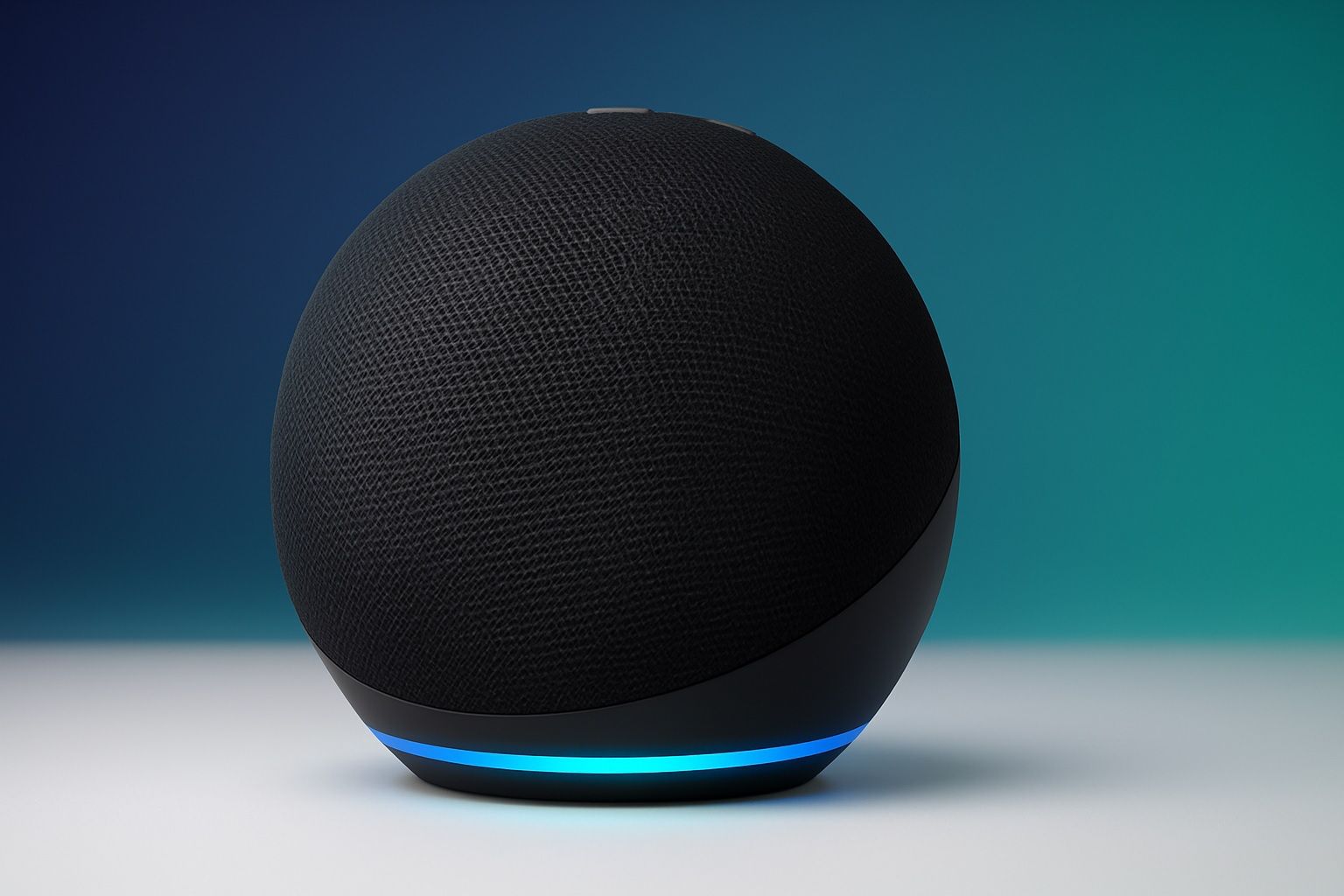- WIZ.AI is a Singapore-based voice-centric conversational AI provider that launched TalkGPT in 2023 as the region’s first ChatGPT-powered customer engagement solution.
- WIZ.AI claims 98% of users cannot tell they are speaking with a bot due to hyper-localized vocabularies and the ability to mimic local accents.
- By 2024, WIZ.AI had 300 clients across 17 countries, expanding from Asia into the U.S., the Middle East and Latin America.
- WIZ.AI operates a 13-billion-parameter LLM powering dialogue management and has domain-specific models, including a Bahasa Indonesia foundation model.
- In June 2025, WIZ.AI announced a partnership with Agora to enable low-latency real-time voice calls and to plug in virtually any LLM.
- Cognigy, a German enterprise platform, has been named a Leader in Gartner’s Magic Quadrant for Conversational AI Platforms for multiple years and was acquired by NICE for 955 million dollars in July 2025.
- Cognigy.AI features 28 language-specific NLU models plus a Universal Model covering 100+ languages, and can be deployed on cloud, private cloud, or on-premises with ISO27001, SOC 2, GDPR, and HIPAA certifications.
- Cognigy has powered Lufthansa to automate over 800,000 monthly conversations and DHL to handle 30 million annual requests, with a Voice Gateway for ASR/TTS and handovers to live agents via Genesys or NICE InContact.
- Kore.ai is a US-based platform known for its XO Platform, named a Gartner Leader in 2023, with 400+ Fortune 2000 customers, and a 2024 funding round of 150 million dollars that included NVIDIA investment and NVIDIA Riva integration.
- Kore.ai released XO Platform v11 in April 2024 with multi-LLM orchestration, XO GPT models, RAG enhancements, Outbound Campaigns and Agent Coaching, plus 100+ pre-built connectors, and supports cloud-agnostic deployment on Azure, AWS, or GCP and can run on-premises.
As businesses race to adopt conversational AI for customer service and automation, three platforms have emerged as frontrunners: WIZ.AI, Cognigy, and Kore.ai. Each offers a blend of generative AI and traditional automation, but they differ in focus, capabilities, and target markets. In this comprehensive comparison, we’ll explore their core features, industry use cases, AI models, integrations, pricing approaches, recent updates, and what experts and users are saying. Read on to discover the strengths and weaknesses of each platform – and which might be best suited for your business in 2025.
WIZ.AI – Voice-Centric AI with a Multilingual Edge
WIZ.AI is a Singapore-based conversational AI provider known for its human-like voice “Talkbots” and focus on emerging markets. The platform emphasizes voice interactions, offering omnichannel support across phone, email, SMS, and messaging apps [1]. WIZ.AI’s Talkbots leverage generative AI and large language models (LLMs) to engage customers with near-human fluency. In fact, the company claims 98% of users cannot tell they’re speaking with a bot, thanks to hyper-localized vocabularies and the ability to mimic local accents and tones [2]. “It’s not just about using AI. It’s about knowing when, where, and why to use it,” notes WIZ.AI Co-founder Jennifer Zhang, underscoring the platform’s emphasis on practical, ROI-driven AI deployments [3].
Industry Focus and Use Cases: Originally launched in Southeast Asia, WIZ.AI honed its solution on industries like banking, telecommunications, e-commerce, and healthcare, particularly for customer service, sales outreach, collections, and order processing [4] [5]. Its voice agents excel in markets with diverse languages and dialects – supporting English (including local varieties) as well as Mandarin, Hindi, Bahasa Indonesia, Thai, Vietnamese, Tagalog, and more [6]. This multilingual capability enables companies to serve customers in their native language across Asia and beyond. By 2024 WIZ.AI had 300 clients across 17 countries, expanding from Asia into the U.S., Middle East and Latin America [7]. Notable clients include leading banks, telcos, and even government health agencies in the ASEAN region. The platform’s use-case templates cover everything from inbound customer support to proactive outbound campaigns (for example, payment reminders or promotions). With telco partners like Smartfren in Indonesia, WIZ.AI is bringing AI voice agents to new sectors and mid-sized businesses to modernize call centers and boost customer engagement [8] [9].
Core Features and AI Capabilities: WIZ.AI sets itself apart with its proprietary voice technology and generative AI integration. Frustrated by error rates near 40% in existing speech tech, WIZ.AI invested in building its own voice AI engine for superior speech recognition and natural text-to-speech [10]. This engine is tuned for local accents and domain-specific vocabulary, drastically improving understanding in real-world call scenarios. On the AI side, WIZ.AI operates a 13-billion parameter LLM that powers its dialogue management [11]. The company has even developed domain-specific models, including a foundational LLM for Bahasa Indonesia [12] – reflecting its commitment to local language AI. WIZ.AI was early to embrace generative AI in customer experience, launching “TalkGPT” in 2023 as the region’s first ChatGPT-powered customer engagement solution [13]. In practice, this means WIZ.AI agents can generate dynamic, contextually appropriate responses on the fly, rather than relying solely on predefined scripts. They understand intent and respond in natural language, even during complex, multi-turn conversations [14]. The platform also includes an AI-human copilot mode, allowing human agents to seamlessly take over or supervise the AI – ensuring a smooth handoff for edge cases or sensitive inquiries [15]. Robust analytics (branded WIZ Insights) provide conversation transcripts, sentiment analysis and performance metrics to continually optimize the AI agents.
Integrations and Infrastructure: As an enterprise-ready solution, WIZ.AI offers flexible deployment and integration options. It can connect to telephony systems (often through partners like Agora for real-time voice and video channels) and messaging platforms like WhatsApp or WeChat, as well as to CRM systems and contact center software via APIs. Its June 2025 partnership with real-time communications provider Agora bolsters WIZ.AI’s infrastructure for low-latency voice calls. Together they deliver emotionally intelligent voice agents that handle multilingual conversations even in low-bandwidth environments [16] [17]. Notably, Agora’s platform enables WIZ.AI to plug in virtually any LLM under the hood, giving enterprises freedom to choose or even bring their own models [18]. For clients with strict data requirements, WIZ.AI can be deployed in private cloud or hybrid setups (though its default is cloud SaaS). The platform prioritizes data security and compliance, especially as it expands into regions with data protection laws like GDPR and Brazil’s LGPD [19] [20]. WIZ.AI explicitly emphasizes compliance and governance to build user trust, which is crucial for large financial and government clients.
Recent Updates and Roadmap: WIZ.AI has been in high-growth mode, expanding globally and enriching its AI capabilities. In 2023, the company’s advances in Generative AI – including TalkGPT and custom LLMs – earned it recognition as a regional AI leader [21]. By mid-2025, WIZ.AI’s co-founder Jennifer Zhang was on stage at Reuters NEXT Asia discussing how to turn AI’s hype into business impact, highlighting WIZ.AI’s voice-first success in Southeast Asia [22] [23]. The platform continues to win industry awards (e.g. ASEAN Tech Awards 2024) [24] and is extending its reach through strategic partnerships. Its focus for the coming year is on scaling “human-like” AI agents in new markets (South America is a key frontier [25]) and refining industry-specific solutions. For instance, WIZ.AI is working on domain-trained AI agents for banking and e-commerce that come with pre-packaged knowledge. Users can expect even tighter human-AI collaboration features and possibly usage-based pricing models as WIZ.AI matures. “Our partnership opens new opportunities to deliver efficient and scalable AI services,” says Clara Lim, WIZ.AI Managing Director, pointing to how WIZ.AI plans to push innovation and enhance customer experience for businesses in each new region it enters [26].
Strengths & Weaknesses: WIZ.AI’s strengths lie in its voice technology excellence, multilingual focus, and agility. It delivers uncanny human-like voice interactions – a 97%+ speech accuracy in local languages – which can dramatically improve call outcomes [27] [28]. For companies needing voice bots that sound natural in Asian or emerging markets, WIZ.AI is a standout choice. Its relative youth means it iterates quickly, embracing cutting-edge generative AI (e.g. GPT integration) ahead of many incumbents. WIZ.AI also touts measurable ROI, citing higher customer activation and cross-sell rates for clients [29] [30]. On the flip side, as a newer entrant, WIZ.AI is not yet as proven in large-scale global deployments as Cognigy or Kore. It has fewer pre-built integrations out-of-the-box (though this is mitigated by open APIs and partner tie-ins). Very large enterprises might find some features less mature – for example, complex workflow orchestration or on-premise deployment options may be limited compared to older rivals. Additionally, WIZ.AI’s stronghold has been voice; its capabilities for pure text/chat deployments or internal (employee-facing) use cases are still evolving. That said, WIZ.AI’s rapid growth and 300+ client roster demonstrate its ability to deliver value, especially for businesses prioritizing outbound voice engagement and multilingual customer contact.
Cognigy – Enterprise Conversational AI for Contact Centers
Cognigy is a German-born conversational AI platform widely recognized for its strength in customer service automation. If WIZ.AI is the voice-savvy upstart, Cognigy is the seasoned enterprise player – it has been named a Leader in Gartner’s Magic Quadrant for Conversational AI Platforms for multiple years [31] and was recently acquired by customer experience giant NICE for $955M, underscoring its market impact [32]. Cognigy’s flagship product, Cognigy.AI, enables companies to deploy AI agents across voice and chat channels that can handle complex inquiries and seamlessly hand off to humans. A core focus is “AI Agents for enterprise contact centers” [33] – in other words, helping large organizations deflect routine calls and chats from live agents while assisting those human agents in real time. “Cognigy’s platform enables enterprises to deliver instant, hyper-personalized, multilingual service on any channel,” the company explains, by integrating Generative and Conversational AI to create “Agentic AI” that augments both self-service bots and live agent support [34]. Top global brands including Mercedes-Benz, Nestlé, Lufthansa, and Toyota use Cognigy to automate millions of customer interactions while maintaining high satisfaction [35] [36].
Core Features and AI Capabilities: At the heart of Cognigy is a powerful Natural Language Understanding (NLU) engine and a visual conversation flow builder. Cognigy offers 28 language-specific NLU models plus a Universal Model covering 100+ languages [37], enabling truly multilingual bots. Its hybrid NLU approach combines machine learning with rules and an ontology, allowing fine control when needed [38]. Uniquely, Cognigy has embraced Large Language Models within its NLU pipeline – “Cognigy’s deep learning technology is augmented with LLMs to deliver superior intent mapping, entity recognition, and contextual mapping,” improving understanding and response quality [39]. This means even without extensive training data, Cognigy’s Intent Analyzer can achieve high accuracy (few-shot learning) in identifying user intents [40]. The platform can generate context-sensitive, realistic, and empathetic responses that feel human, thanks to these LLM enhancements to its NLU [41]. However, Cognigy does not simply unleash a generative model to chat freely; instead, it tightly orchestrates AI responses within defined conversation flows and “guardrails” to ensure relevance and accuracy. Cognigy.AI provides a rich set of conversation design tools: a node-based flow editor, reusable intent hierarchies, slot-filling for entities, and an integrated Knowledge Base Q&A module (dubbed Knowledge AI). For voice interactions, Cognigy includes a Voice Gateway connector to plug into telephony systems or SIP, supporting ASR/TTS via providers like Google or Amazon. The platform is omnichannel by design, with pre-built adapters for web chat, WhatsApp, SMS, Facebook Messenger, Slack, Microsoft Teams, and more [42]. It also offers an Agent Assist (Copilot) module that listens to live calls or chats and suggests answers to human agents in real time, boosting agent productivity.
Cognigy’s enterprise orientation shows in its emphasis on governance, security, and scaling. It supports role-based access control, versioning, and collaborative development for large bot teams [43]. Deployment can be on Cognigy’s cloud, private cloud, or fully on-premises – a must for some regulated industries [44]. The software is certified for ISO27001, SOC 2, GDPR, HIPAA and other standards, giving enterprises confidence in compliance [45]. Cognigy also boasts a marketplace of 75+ extensions (for CRM systems, databases, authentication, etc.) and an open SDK for custom code in JavaScript or Python within flows [46] [47]. This flexibility means developers can extend bot functionality endlessly, though it also raises the learning curve. As one review noted, “Advanced workflows can require engineering help… Smaller teams often struggle with the learning curve” [48] [49]. In essence, Cognigy provides enterprise-grade AI infrastructure – extremely powerful when fully utilized, but potentially “too much” for simple needs.
Industry Focus and Use Cases: Cognigy markets itself squarely as an enterprise solution for large contact centers and service teams. Its platform is versatile enough to automate customer interactions in virtually any sector, and indeed its client list spans automotive (e.g. VW, Toyota), airlines (Frontier, Lufthansa), retail (Lidl), banking, insurance, telecom, utilities, and even the public sector [50] [51]. That said, a common theme is high-volume, high-stakes customer service. For example, Cognigy has helped Lufthansa automate over 800k monthly conversations for flight inquiries [52], and DHL to handle 30 million annual customer service requests via AI [53]. Beyond customer self-service, Cognigy is used for employee helpdesk bots (IT support, HR FAQs) and even in-car assistants (Toyota’s “AI in your Car” project [54]). The platform supports voice or text-based virtual agents for both inbound and outbound use cases – from answering FAQs, guiding users through processes, to proactively notifying customers. With its integration capabilities, Cognigy bots can perform transactions like checking order status, resetting passwords, or updating records in backend systems. The recent focus has been on contact center automation, including seamless handovers: Cognigy’s bot can escalate to a live agent on platforms like Genesys or NICE InContact, passing context so the customer doesn’t have to repeat themselves [55]. Importantly, Cognigy’s Agentic AI strategy means it doesn’t view human agents and AI as separate silos – the AI works in tandem with humans (via agent assist tools, etc.) to elevate the overall service experience [56]. This resonates in industries where compliance or empathy requires a human touch for complex cases, while AI handles the repetitive queries.
Recent Updates and Expert Insights: Cognigy has been rapidly evolving its product with Generative AI features, especially in the past year. In mid-2024, Cognigy introduced capabilities like LLM orchestration (using different LLM providers with fallback logic) and an AI Coach (Copilot) to assist bot designers and agents [57] [58]. The company’s CEO, Philipp Heltewig, highlighted their progress: “Cognigy NLU is the brain of our AI Agents… we offer outstanding recognition accuracy in any language, with minimum training required for responses that are context-sensitive, realistic, and empathetic – just like human dialogue.” [59] This vision was validated when Cognigy won “Best Natural Language Understanding Solution” in the 2024 AI Breakthrough Awards, beating many competitors [60] [61]. Industry analysts praise Cognigy’s technical excellence – “Cognigy NLU is a top-tier choice… exceptional in accurately identifying intents with minimal training,” said AI Breakthrough’s managing director, citing its deep learning and emphasis on precision [62]. In late July 2025, NICE Ltd. announced it is acquiring Cognigy to fold its conversational AI into NICE’s CXone customer experience platform [63]. NICE’s CEO called the move “a landmark that sets a new standard for customer experience in the AI era,” lauding Cognigy as a “market leader in enterprise-grade conversational and agentic AI” [64]. This acquisition is poised to accelerate Cognigy’s R&D and global reach even further, backed by NICE’s resources. We can expect deeper integration of Cognigy’s AI with contact center workflows (for example, combining Cognigy’s virtual agents with NICE’s call recording analytics and workforce management tools). Cognigy’s roadmap also includes continued enhancement of its Knowledge AI (using retrieval-augmented generation) and possibly lighter-weight SaaS offerings. One hint is the mention of 80% ARR growth expected in 2026 under NICE’s wing [65] – signaling aggressive expansion and innovation to come.
Strengths & Weaknesses: Cognigy’s strength is undeniably its enterprise maturity and powerful AI capabilities. It offers one of the most sophisticated NLU engines on the market, with proven multilingual support (even “Klingon,” as Heltewig jokes) [66]. The platform excels at complex, large-scale deployments: you can build extremely customized bots that integrate with anything and run securely in any environment. Cognigy is often praised for strong omnichannel support and CX features (like its rich webchat UI, live agent transfer, and analytics) [67]. It also leads in compliance and governance, making it a safe bet for Fortune 500 companies. However, all this sophistication comes with trade-offs. Cost is a major consideration – Cognigy does not publish prices, and most contracts reportedly exceed $300k per year [68]. There’s no free tier or self-service, which puts it out of reach for many SMBs [69]. Additionally, the learning curve can be steep: while the visual builder is user-friendly for simple flows, leveraging advanced features (like writing custom code nodes, or orchestrating multiple LLMs with guardrails) requires significant expertise [70] [71]. Some users note gaps in documentation for complex use cases, meaning you might need support from Cognigy’s team or partners to fully unlock its potential [72]. In voice use cases, Cognigy is capable but not “voice-first” – it relies on third-party speech services and doesn’t natively offer the ultra-realistic TTS or low-latency performance that a specialist like WIZ.AI does [73]. If your needs are modest or you want a quick, out-of-the-box chatbot, Cognigy could be overkill. But for large enterprises seeking a reliable, customizable AI platform – especially to automate contact center interactions in multiple languages – Cognigy is a top-tier solution (now backed by the heft of NICE).
Kore.ai – All-in-One Conversational AI with Generative Muscle
Kore.ai is a U.S.-based conversational AI company known for its broad Experience Optimization (XO) platform. It provides a one-stop shop for building AI assistants for customers, employees, and business processes alike [74]. Kore.ai has positioned itself as a leader in both conversational and generative AI, often touting a decade of AI expertise and a platform approach that covers everything from chatbots and voice bots to process automation and enterprise search. Recognized as a Leader alongside Cognigy in Gartner’s 2023 Conversational AI Magic Quadrant [75], Kore.ai has a strong enterprise client base (400+ of the Fortune 2000 use it) and in early 2024 secured a $150 million investment to scale its generative AI capabilities [76] [77]. Founder and CEO Raj Koneru frames Kore.ai’s mission this way: “We have been working with advanced AI for a decade – our deep expertise and open approach put us in prime position to take advantage of the momentum and do AI right… Sitting above the infrastructure layer and LLM chaos, our open approach grants businesses freedom of choice with built-in guardrails for effective AI.” [78]. In practice, Kore.ai’s platform is notable for its flexibility (multi-LLM support, no-code and pro-code tools) and its pre-built solutions (industry and function-specific “Assist” products).
Core Features and Platform Capabilities: The Kore.ai XO Platform is richly featured, covering the end-to-end lifecycle of enterprise virtual assistants. Like Cognigy, it offers a visual bot builder where users can design conversation flows with a drag-and-drop interface and node-based logic [79]. However, Kore.ai has heavily infused Generative AI assistance into this process: the builder can provide real-time suggestions as designers write prompts or dialog, and Kore’s proprietary “XO GPT” models can auto-generate parts of the bot (for instance, suggesting intents, utterances, or entire responses) [80]. Notably, Kore.ai has developed its own set of fine-tuned LLMs called XO GPT, optimized specifically for conversational tasks and customer experience. These models perform tasks like paraphrasing, summarization, and intent understanding to make bot conversations more natural [81]. The platform allows orchestration of multiple LLMs: you can plug in OpenAI’s GPT-4, an Anthropic model, or Kore’s models and have the system route requests to the best model for the job (all under enterprise-grade security and guardrails) [82]. This multi-LLM orchestration is a standout capability, ensuring companies aren’t locked into one AI brain and can leverage the latest advancements.
Beyond generative AI, Kore.ai provides robust tools for Retrieval-Augmented Generation (RAG) – essentially letting your bots search and pull information from your enterprise knowledge bases to form answers. The XO platform includes an Advanced Knowledge AI module that indexes company documents and uses an advanced RAG pipeline with configurable chunking, custom retrieval strategies, and prompt tuning for accurate answers [83]. This means a Kore.ai bot can answer free-form questions by drawing on, say, your product manuals or internal wiki, with citeable sources, rather than only answering from a fixed script.
The Kore.ai platform is omnichannel and multi-modal. It comes with 100+ pre-built connectors to popular enterprise apps and channels (Salesforce, ServiceNow, Twilio, WhatsApp, Microsoft Teams, etc.) [84]. It also has a telephony connector and its own voice gateway, allowing deployment of voice bots. In fact, Kore.ai has integrated NVIDIA’s Riva neural voice technology to offer high-quality speech synthesis and ASR within the platform [85]. This gives Kore.ai voice bots more natural sounding speech and faster response times, which is crucial for phone-based use. Additionally, Kore.ai supports an Agent Assist solution (called AgentAssist), providing call center agents with real-time suggested replies and knowledge lookup – a reflection of the platform’s holistic approach to customer experience [86]. There’s also a module for Outbound Campaigns, letting businesses use AI agents for proactive calls or messages (for example, an automated voice agent calling customers with appointment reminders or payment collection notices) [87].
Kore.ai’s architecture is cloud-native but can be deployed in private cloud or on-premises for customers who need it. It emphasizes an “open” approach, meaning companies can choose their cloud (it can run on Azure, AWS, GCP) and integrate any AI models or data sources they prefer [88]. This is appealing to IT teams that want to avoid vendor lock-in. In terms of development, Kore.ai caters to both no-code builders and developers: the no-code interface is complemented by a rich scripting option and API access for custom logic. There’s also a marketplace of pre-built bots and skills (Kore’s Agent Marketplace) where customers can find templates like a Banking Assistant or an IT Helpdesk bot to kickstart their projects [89] [90]. To help companies adopt the tech, Kore.ai established an Academy for training and a large community forum, acknowledging that the platform is feature-rich and may require education to use effectively [91].
Industry Solutions and Use Cases: Kore.ai differentiates itself by delivering not just a platform but also pre-packaged solutions for specific industries and functions. For example, it offers BankAssist (for banking), HealthAssist (healthcare), RetailAssist (retail) – each is a ready-made virtual assistant with domain knowledge and workflows tailored to common use cases in that industry [92]. Similarly, Kore has IT Assist and HR Assist for internal employee support, and a SmartAssist product aimed at contact centers. These accelerators can drastically reduce time-to-value; a hospital could deploy a HealthAssist bot to handle appointment scheduling and FAQs with much less configuration than building from scratch. Many large enterprises use Kore.ai across departments – one cited example is Coca-Cola, which uses Kore.ai to build customer service bots as well as HR bots [93] [94]. Other marquee customers include AT&T, PNC Bank, and Airbus, collectively helping drive 200 million end-user interactions via Kore.ai agents worldwide [95] [96]. This breadth of usage shows Kore.ai’s versatility: it’s employed for everything from banking customer inquiries, telecom support chats, e-commerce virtual shopping assistants, to internal IT helpdesk conversations.
With the release of XO Platform v11.0 in 2024, Kore.ai doubled down on enabling AI across all parts of an enterprise [97]. The update introduced a unified interface to access Automation AI (process bots), Contact Center AI, Search AI, and Agent AI modules in one place [98]. In essence, Kore.ai is positioning itself not just for conversational front-end tasks but for any automation that can be improved with conversational or generative AI. For instance, Search AI lets employees use natural language to query internal systems (like “Find the latest marketing plan document”), which blends into the trend of enterprise AI copilots. The platform’s flexibility in integrating multiple LLMs also means it can be tuned for specialized tasks – e.g., use a smaller, cheaper model for simple FAQ handling but a more powerful model for complex problem-solving queries.
Recent Developments and Vision: Kore.ai has been extremely active in advancing its generative AI features. In early 2023, with XO Platform v10, it introduced few-shot and zero-shot bot design, where the system could build initial bots with minimal training data by leveraging GPT-3 [99] [100]. Raj Koneru highlighted that “by creatively tapping into generative AI models like GPT-3… we’ve paved the way for future innovations” [101], noting how these capabilities eliminate much of the manual effort in bot creation. Fast-forward to April 2024, XO Platform v11 launched with notable “industry-first” features: the multi-LLM orchestration and XO GPT models mentioned above, plus enhancements like Outbound Campaigns dialers and real-time Agent Coaching [102] [103]. This release aimed to make deploying AI solutions “10X faster” for enterprises [104]. It’s no coincidence this came “off the heels of a successful $150M funding round” – Kore.ai used that capital infusion (from investors including NVIDIA) to assert leadership in generative AI for enterprise [105]. One direct result was the NVIDIA partnership: Kore.ai integrated NVIDIA’s generative voice tech (Riva) and received a strategic investment, signaling a deep collaboration on AI infrastructure [106].
Analysts have taken note of Kore.ai’s momentum. SiliconANGLE reported Kore.ai’s claim that v11 helps customers deploy AI models “ten times faster” than before [107] [108]. Industry media CXToday highlighted Kore’s introduction of “lighter, less expensive LLMs for customer CX” as part of its XO platform – an appealing prospect for companies concerned about the cost of running giant models [109]. And Voicebot.ai, covering the $150M funding, emphasized how Kore.ai was among “the early enterprise adopters” of generative tech, having integrated OpenAI’s GPT-3 into its platform back in 2022 [110] [111]. With the conversational AI market projected to grow massively (to $377B by 2032, per Gartner) [112] [113], Kore.ai’s strategy is to be the go-to platform that enterprises can trust to navigate the “LLM chaos” effectively [114]. We can expect Kore.ai to continue enhancing its AI governance tools (allowing companies to apply policy and control over AI outputs), expanding its library of fine-tuned models for different verticals, and possibly introducing more turnkey AI assistants for specific roles. The company’s global customer conference (Konversations 2024) put a spotlight on its innovation roadmap and how it plans to embed generative AI across customer and employee experiences [115].
Strengths & Weaknesses: Kore.ai’s strengths are in its comprehensiveness and innovation. It offers an extremely broad set of capabilities under one roof, which can reduce the need for multiple vendors. Companies get a proven conversational AI platform plus cutting-edge generative AI features and even RPA-like process automation in one package. Multi-LLM support and custom model fine-tuning are major differentiators – Kore.ai lets you orchestrate the AI brain that best fits each task, a forward-thinking approach as new models keep emerging [116]. Additionally, Kore.ai’s pre-built domain assistants (BankAssist, etc.) give it a leg up when a business wants quick deployment with industry best-practices baked in [117]. The platform also has strong credentials in enterprise security and can be run on-premises, which few newer competitors can offer. On the flip side, Kore.ai’s very breadth can be a double-edged sword. Some users may find the platform complex to learn and configure optimally, especially if they don’t need all of its components. Training is almost a necessity (hence the Academy) to utilize features like advanced knowledge graphs or multi-LLM orchestration. For small companies or simple chatbot needs, Kore.ai could be overly complex and expensive – while it has introduced some lower-tier plans in the past [118], its primary focus is large enterprises with the budget to match. Like Cognigy, Kore.ai typically engages via enterprise sales rather than self-service sign-ups, so transparency in pricing is limited (expect custom quotes for the Enterprise tier, with costs scaling based on number of users or interactions). Another consideration: while Kore.ai excels in generative AI adoption, that also means rapid changes – clients will need to keep up with frequent updates (v10 to v11 within a year, etc.) to leverage the latest models and features. Finally, support and community size matter; Kore.ai does have a community, but it’s smaller than, say, open-source frameworks or the developer ecosystems of big tech. However, many of these “weaknesses” are inherent to a cutting-edge enterprise platform. For organizations seeking an all-in-one, future-proof conversational AI solution – one that can handle customer chats, voice calls, employee questions, and more – Kore.ai delivers a compelling and highly customizable platform.
Head-to-Head: Which Platform for Your Business?
All three platforms – WIZ.AI, Cognigy, and Kore.ai – are powerful, and the “best” choice depends on your specific needs and context. Here’s a comparative rundown of their key differentiators and ideal fits:
- WIZ.AI is best suited for companies that heavily rely on voice conversations with customers, especially in Asia or other multilingual markets. Its strength in local language understanding and human-like speech make it ideal for call center automation, voice-based customer engagement, and outbound calling campaigns. If you need a quick ROI in customer activation (think upselling via automated calls or scaling your support in local dialects) and want a nimble, generative AI-powered solution, WIZ.AI is a strong contender. It may also be attractive for businesses in emerging markets or those who value a more boutique provider that can customize to regional needs. However, if your priority is a long-proven platform with extensive third-party integrations and on-premise deployment, or if your use cases are more text-based chat than voice, you might lean towards the others. WIZ.AI’s footprint is expanding, but its services and support are still more regionally concentrated (APAC and increasingly Latin America) compared to the truly global presence of Cognigy and Kore.ai.
- Cognigy shines for large enterprises and contact centers that require precision, control, and multilingual excellence. If your business demands enterprise-grade reliability, with every conversation aligning to business rules and compliance (e.g. in banking or insurance), Cognigy’s meticulous NLU and flow control are huge advantages. It’s an excellent choice when you have development resources to craft sophisticated bots or when you need to integrate the AI deeply into your existing IT stack (CRM, databases, legacy systems). Cognigy is also a safe bet for organizations that need on-premises deployment or strict data isolation – for example, government agencies or healthcare companies handling sensitive data. Thanks to its NICE acquisition, Cognigy will integrate even more with contact center operations; so if you use NICE’s products or similar CCaaS platforms, Cognigy will likely offer seamless synergy [119] [120]. The flip side is cost and agility: Cognigy might be overkill for a mid-market business or a quick pilot project. The total cost of ownership is high, and time-to-market may be longer given the complexity (though their new generative features are reducing development time). In summary, choose Cognigy for mission-critical, high-volume customer service AI where quality and control trump speed, and where a close partnership with a vendor is acceptable.
- Kore.ai is the broadest platform, ideal for enterprises that want to implement conversational AI across multiple areas of the business. If you have a vision of a unified AI strategy – one platform handling your customer chatbot, your voice IVR replacement, your HR assistant, and even automating some workflows – Kore.ai is designed for that scale and versatility [121] [122]. It’s a great fit for companies that are enthusiastic about generative AI and want to leverage the latest LLM tech but still need the enterprise scaffolding (security, integration, multi-turn dialog management) to make it reliable. Kore.ai’s “open garden” approach to AI models will appeal if you’re wary of being tied to a single AI engine; you can experiment with different LLMs or use private models, all within Kore’s governance framework [123]. Additionally, if speed of initial deployment is key – say you want a working bot in days – Kore’s pre-built solutions and templates can be a boon. On the downside, if your needs are very focused (e.g. only a chat widget for customer FAQ on your website), Kore’s vast platform might feel too heavy. Also, organizations with limited AI expertise might find themselves using only a fraction of Kore.ai’s capabilities, which could be inefficient. In terms of pricing, Kore.ai typically targets similar enterprise budgets as Cognigy, though it has shown some flexibility with cloud-based subscription plans. Overall, choose Kore.ai if you’re aiming for a comprehensive, future-forward AI platform that can scale with your innovation – for instance, a multinational bank automating both customer support and internal operations, or a tech-savvy enterprise that wants the most modern AI features under robust control.
Competitive Differentiators at a Glance:
- Generative AI Integration: All three support it, but Kore.ai’s multi-LLM orchestration and custom XO GPT models stand out for flexibility [124]. WIZ.AI uses generative AI with a domain-specific twist (like TalkGPT for customer engagement) [125], excelling in conversational “small talk” and nuance in voice. Cognigy incorporates LLMs mainly to enhance intent recognition and response quality within a governed flow [126] – it’s cautious but effective, ensuring the AI doesn’t go off-script.
- Voice and Language:WIZ.AI is the voice specialist with proprietary tech for natural, localized speech (many Asian languages, plus accents) [127]. Cognigy supports voice through integration and is proven in multilingual text, with 100+ languages and translation capabilities [128]. Kore.ai also supports voice well (especially after integrating NVIDIA’s tech) and covers dozens of languages, though its strength is more in text-based and hybrid interactions combined with search/knowledge tasks [129] [130].
- User-Friendliness vs. Depth:WIZ.AI being newer, offers a fairly streamlined, use-case-driven approach (and even co-delivers solutions via partners), which can mean faster setup for its niches. Cognigy and Kore.ai are loaded with features – they require time to master but ultimately allow far more complex workflows. Both provide visual builders; Cognigy’s is highly refined for contact center dialogs, while Kore’s is integrated with AI suggestions to speed design [131]. If you want pure no-code simplicity, none of these are as simple as the most basic chatbot builders, but relative to each other, WIZ.AI might involve less initial complexity (focused on voice scripts), whereas Cognigy and Kore.ai demand a bit more upfront design work for flows and integrations.
- Market Position & Ecosystem: Cognigy and Kore.ai have larger ecosystems of integration partners and solution providers worldwide. For example, Cognigy boasts a “vast partner network” and 1000+ global brands using it [132], and Kore.ai has hundreds of partners as well [133]. WIZ.AI, while rapidly expanding, still has a more regional partner network (it often partners with telecoms in each country, as seen with Smartfren in Indonesia [134]). If having local support and a big community of developers is important, Cognigy and Kore edge ahead. However, WIZ.AI’s partnership with Agora and presence in Asia/LatAm may be advantageous for companies operating in those regions, offering more localized support and knowledge of local consumer behavior.
Pricing Models: All three operate on enterprise SaaS pricing that factors in usage (conversations, seats, or minutes) and add-on modules. Cognigy and Kore.ai are generally at the high end – for instance, Cognigy deals often bundle voice, chat, and even charge extra for certain features like the Knowledge AI or Copilot [135]. Expect six-figure annual costs for substantial deployments. Kore.ai similarly offers custom enterprise pricing, though it has indicated having an Essential and Advanced tier for smaller deployments [136] – in reality, serious usage will likely move you to a custom quote. WIZ.AI, being newer, doesn’t publish pricing either; it likely offers more flexibility for emerging-market clients, potentially including usage-based pricing (its terms mention a usage-based SaaS model) [137]. In general, if budget is a constraint and you don’t need the full power of these platforms, you might consider smaller competitors or simpler bot frameworks. But if you’re comparing these three, be prepared for a significant investment – one justified by the potential ROI in automating thousands of interactions. As one reviewer noted about Cognigy, “Their pricing model is too expensive for SMBs… [they] could have a lower-tier offering” [138]. That sentiment applies across the board here.
Final Verdict
In 2025, conversational AI platforms have evolved far beyond simple chatbots. WIZ.AI, Cognigy, and Kore.ai exemplify this evolution, each blending conversational design with generative AI in unique ways. If you’re looking for a voice-first, customer engagement focus with rapid deployment in local languages, WIZ.AI might reign supreme. For a tried-and-tested enterprise conversation platform to transform a large contact center with precision and control, Cognigy is a formidable choice (now with the backing of NICE’s CX expertise). And if your goal is to embrace the latest AI innovations on a unified platform that can scale across use cases, Kore.ai offers an “AI-first” toolkit that few can match in breadth [139] [140].
Ultimately, the “winner” of this showdown depends on your priorities: instant voice rapport and regional nuance (WIZ.AI) vs. enterprise-grade conversational mastery (Cognigy) vs. generative AI-powered breadth and agility (Kore.ai). The good news is that all three are continually improving. As generative AI becomes ubiquitous – Gartner predicts 75% of conversational AI offerings will embed GenAI by 2026 [141] – vendors like WIZ.AI, Cognigy, and Kore.ai are pushing each other to new heights. Businesses evaluating them should consider piloting each platform on a small scale, if possible, to see which aligns best with their team’s skills and their strategic goals. With the right choice, you’ll be poised to deliver exceptional, AI-driven experiences for your customers and employees, staying a step ahead in the conversational AI race.
Sources:
- WIZ.AI official website – product and solutions overview [142] [143] [144].
- WIZ.AI G2 Product Profile – features, languages, and capabilities [145] [146].
- Reuters NEXT Asia 2025 – Jennifer Zhang (WIZ.AI President) panel insights on AI integration [147].
- WIZ.AI & Agora partnership announcement – multilingual real-time voice agents and LLM integration [148] [149].
- Insignia Business Review (May 2025) – Case study on WIZ.AI global expansion and technology (proprietary Voice AI, 13B LLM, TalkGPT) [150] [151].
- WIZ.AI press release (Oct 2024) – 300 clients across 17 countries, industry solutions and ROI use cases [152].
- Cognigy press release (July 2024) – AI Breakthrough Award “Best NLU Solution”, details on Cognigy’s multilingual NLU and LLM capabilities [153] [154].
- Cognigy CEO Philipp Heltewig quoted on multilingual support and human-like dialogue [155].
- AI Breakthrough MD Steve Johansson praising Cognigy’s intent accuracy [156].
- Synthflow 2025 Cognigy Review – Key features, pros/cons, pricing insights [157] [158].
- NICE press release (July 28, 2025) – NICE acquiring Cognigy, quotes from NICE CEO and Cognigy CEO on “agentic AI” and customer experience vision [159] [160].
- NICE press release – Cognigy’s platform overview (100+ languages, any channel, 1000+ brands) [161] [162].
- Kore.ai press release (Jan 23, 2023) – XO Platform v10 release, integration of OpenAI GPT-3, zero-shot bot building, and industry solutions (BankAssist, etc.) [163] [164].
- Kore.ai press release (Apr 17, 2024) – XO Platform v11 release, $150M funding, multi-LLM orchestration, XO GPT models, RAG, outbound and agent assist features [165] [166].
- Voicebot.ai (Jan 2024) – “Kore.ai Raises $150M” article by Eric Hal Schwartz; Kore’s use of OpenAI/Anthropic LLMs, major clients (AT&T, Coca-Cola, etc.), Raj Koneru quote on open approach [167] [168].
- Voicebot.ai – Kore.ai’s integration of NVIDIA Riva voice and strategic context [169].
- Voiceflow Blog (2025) – Overview of Kore.ai platform, noting XO GPT focus on customer experience and the need for enterprise scale (ARR $100M) [170] [171].
References
1. www.g2.com, 2. www.g2.com, 3. www.wiz.ai, 4. www.wiz.ai, 5. www.wiz.ai, 6. www.g2.com, 7. www.wiz.ai, 8. www.wiz.ai, 9. www.wiz.ai, 10. review.insignia.vc, 11. review.insignia.vc, 12. review.insignia.vc, 13. review.insignia.vc, 14. www.wiz.ai, 15. www.g2.com, 16. www.wiz.ai, 17. www.wiz.ai, 18. www.wiz.ai, 19. review.insignia.vc, 20. review.insignia.vc, 21. review.insignia.vc, 22. www.wiz.ai, 23. www.wiz.ai, 24. www.wiz.ai, 25. review.insignia.vc, 26. www.wiz.ai, 27. www.wiz.ai, 28. www.g2.com, 29. www.wiz.ai, 30. www.wiz.ai, 31. vux.world, 32. www.nice.com, 33. www.nice.com, 34. www.nice.com, 35. www.nice.com, 36. www.nice.com, 37. www.cognigy.com, 38. synthflow.ai, 39. www.cognigy.com, 40. www.cognigy.com, 41. www.cognigy.com, 42. synthflow.ai, 43. synthflow.ai, 44. synthflow.ai, 45. synthflow.ai, 46. synthflow.ai, 47. synthflow.ai, 48. synthflow.ai, 49. synthflow.ai, 50. www.cognigy.com, 51. www.nice.com, 52. www.cognigy.com, 53. www.cognigy.com, 54. www.cognigy.com, 55. synthflow.ai, 56. www.wiz.ai, 57. www.cognigy.com, 58. synthflow.ai, 59. www.cognigy.com, 60. www.cognigy.com, 61. www.cognigy.com, 62. www.cognigy.com, 63. www.nice.com, 64. www.nice.com, 65. www.nice.com, 66. www.cognigy.com, 67. synthflow.ai, 68. synthflow.ai, 69. synthflow.ai, 70. synthflow.ai, 71. synthflow.ai, 72. synthflow.ai, 73. synthflow.ai, 74. kore.ai, 75. vux.world, 76. www.prnewswire.com, 77. www.prnewswire.com, 78. voicebot.ai, 79. www.voiceflow.com, 80. www.voiceflow.com, 81. www.prnewswire.com, 82. www.prnewswire.com, 83. www.prnewswire.com, 84. kore.ai, 85. voicebot.ai, 86. www.prnewswire.com, 87. www.prnewswire.com, 88. www.prnewswire.com, 89. kore.ai, 90. kore.ai, 91. www.voiceflow.com, 92. kore.ai, 93. voicebot.ai, 94. voicebot.ai, 95. voicebot.ai, 96. voicebot.ai, 97. www.prnewswire.com, 98. www.prnewswire.com, 99. kore.ai, 100. kore.ai, 101. kore.ai, 102. www.prnewswire.com, 103. www.prnewswire.com, 104. www.prnewswire.com, 105. www.prnewswire.com, 106. voicebot.ai, 107. siliconangle.com, 108. siliconangle.com, 109. www.cxtoday.com, 110. voicebot.ai, 111. voicebot.ai, 112. voicebot.ai, 113. voicebot.ai, 114. voicebot.ai, 115. www.prnewswire.com, 116. www.prnewswire.com, 117. kore.ai, 118. www.wheelhouse.com, 119. www.nice.com, 120. www.nice.com, 121. www.prnewswire.com, 122. www.prnewswire.com, 123. www.prnewswire.com, 124. www.prnewswire.com, 125. review.insignia.vc, 126. www.cognigy.com, 127. www.g2.com, 128. www.cognigy.com, 129. voicebot.ai, 130. voicebot.ai, 131. www.voiceflow.com, 132. www.nice.com, 133. www.prnewswire.com, 134. www.wiz.ai, 135. synthflow.ai, 136. www.wheelhouse.com, 137. www.wiz.ai, 138. www.capterra.com, 139. www.prnewswire.com, 140. www.prnewswire.com, 141. www.prnewswire.com, 142. www.wiz.ai, 143. www.wiz.ai, 144. www.wiz.ai, 145. www.g2.com, 146. www.g2.com, 147. www.wiz.ai, 148. www.wiz.ai, 149. www.wiz.ai, 150. review.insignia.vc, 151. review.insignia.vc, 152. www.wiz.ai, 153. www.cognigy.com, 154. www.cognigy.com, 155. www.cognigy.com, 156. www.cognigy.com, 157. synthflow.ai, 158. synthflow.ai, 159. www.nice.com, 160. www.nice.com, 161. www.nice.com, 162. www.nice.com, 163. kore.ai, 164. kore.ai, 165. www.prnewswire.com, 166. www.prnewswire.com, 167. voicebot.ai, 168. voicebot.ai, 169. voicebot.ai, 170. www.voiceflow.com, 171. www.voiceflow.com









